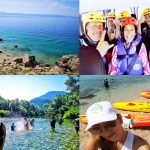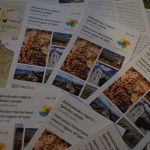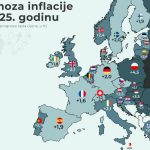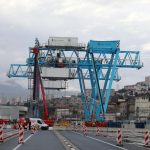The Inland Dalmatia or ‘Zagora’ part of Split-Dalmatia County takes up a small slice of the tourist cake in the region. With even more opportunities to be realized, year after year, tourism in this part of the county is growing, reports Slobodna Dalmacija on February 15, 2019.
The Croatian Tourist Board even recognized this. Thus, the area that borders Vrgorac, the Imotski and Cetina region, Dugopolje and Klis were declared the most successful destination for rural tourism in Croatia in 2018. Just one year before, that same destination was in the final fight for this prestigious award.
Last year, Inland Dalmatia deservedly ruled regarding rural tourism in Croatia. And it remains a destination of unexplored beauty.
The leading Croatian tourism workers have long realized that the sea and the sun, which is in abundance along the Croatian coastline, is no longer sufficient for a more attractive tourism clientele.
Not far away, Croatia’s coastal neighbors are an example that you don’t need a beach holiday when you can visit the country’s Tuscany.
The Inland Dalmatia region of the Central Dalmatian County – which includes the towns of Sinj, Trilj, Imotski, Vrgorac and Vrlika, and the Dugopolje and Klis municipalities – abounds in the richness of historical and cultural heritage and still unexplored, almost virgin natural beauties such as karst fields surrounded by mountains, adorned with crystalline rivers and lakes. Tourist experts also keep this area for the adventurers who want to enjoy native cuisine.
In this area, the traditional heritage has been recognized in the world as valuable with protection through UNESCO, such as klapa singing, Inland Dalmatian folk dancing “kolo”, Inland Dalmatian folk singing “ojkanje”, Sinj Alka, and medieval tombstones.
The comparative advantages of Inland Dalmatia as a rural tourism destination is the distance of only half an hour by car from Split Airport and major coastal tourist destinations such as Split, Makarska, and Trogir.
All of Inland Dalmatia also boasts excellent road connections with the state roads and Dalmatia. Of the public tourist infrastructure, it is indeed worth mentioning the MEDPATHS trails. In Sinj, there are three cycling and two trekking trails with a total length of 145 kilometers.
Trilj has built one wine, five bicycle and two trekking trails with a total length of 126 kilometers, and in Vrlika, there are three cycling, four hiking and one pedestrian trail with an entire length of 131 kilometers. Particularly marked is the pilgrimage trail named Sinjska Staza in the length of 148 kilometers, connecting Solin, Sinj, Livno, Tomislavgrad, and Rama.
There are also camps, the thematic walking route of the Roman road, the walkway around the Blue and Red Lake with a viewpoint, and the new thematic trails around Peruća lake and in the areas of Dugopolje, Imotski, Klis, Sinj, Trilja, Vrgorac, and Vrlika.
Inland Dalmatia as a tourist destination still has modest accommodation capacities: 707 beds in six hotels, of which five boast 3 and one 4-stars, 11 beds in the only hostel, 32 camping spaces, 13 beds in two OPG, and in 360 private homes, 2261 tourist beds.
The growth is indicated by the fact that in 2017, compared to the previous year, the number of accommodation facilities increased by 60 percent and the number of beds by 37 percent.
In particular, the Imotski region already has more than 200-holiday houses with swimming pools whose occupancy is equal, and in some cases higher than hotel capacities along the coast and on the islands.
Through 2017, Inland Dalmatia recorded 84,100 tourist arrivals, which generated 204,973 overnight stays. Compared to the previous year, the number of arrivals increased by 61 percent and the number of overnight stays by 44 percent. Among foreign guests, Germans visit the most, followed by guests from Korea, Poland, and Spain.
There are 54 restaurants, eight family farms and five wineries available to visitors in this part of the region.
This is all great potential for tourism as a branch of business, and could even contribute to stopping the demographic downfall the area. Because if the trend of emigration continues, tourists will not have anywhere to visit. That is why the recognition of Inland Dalmatia as a leading destination for rural tourism in 2018 should also be understood as a demographic stimulus that is needed for this economically underdeveloped space.
Translated from Slobodna Dalmacija
To read more about Inland Dalmatia, follow TCN’s dedicated page.









